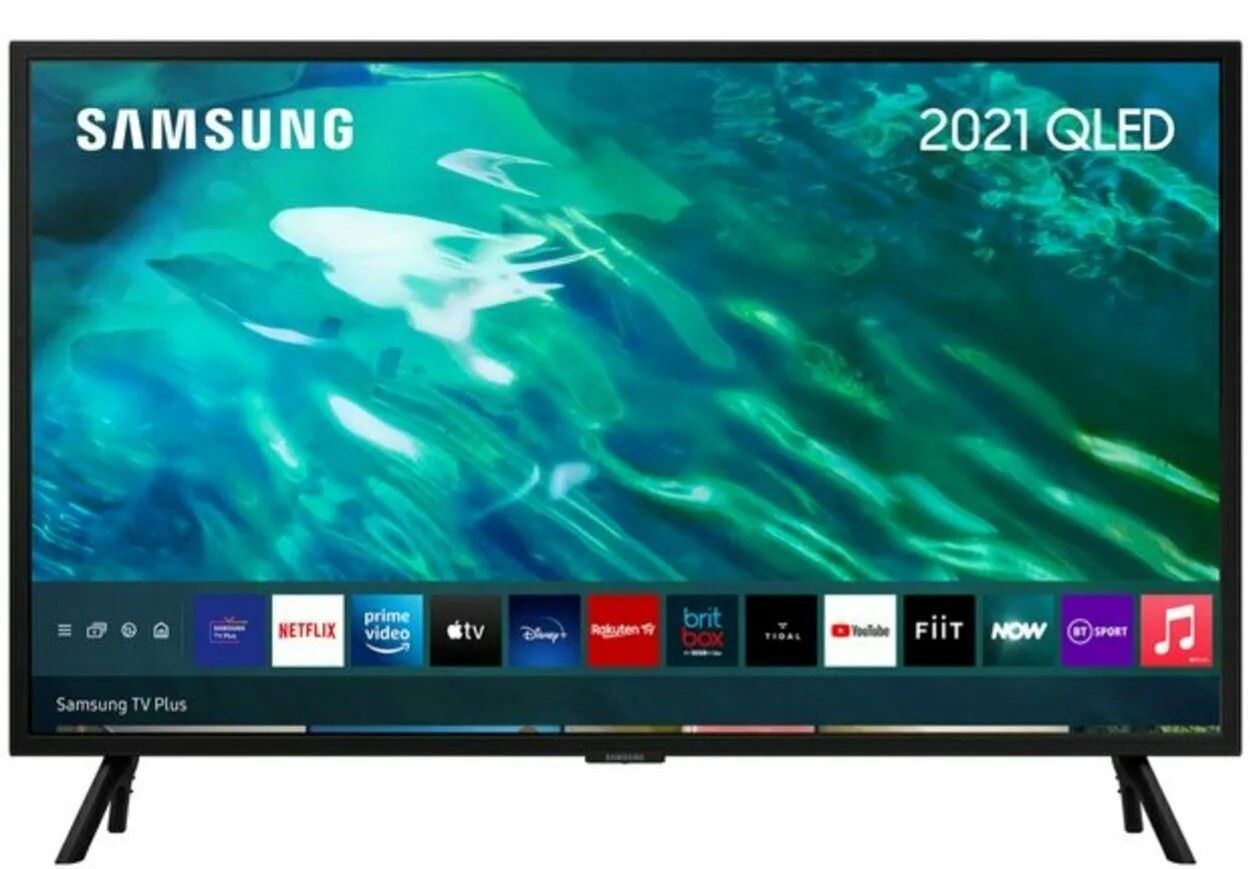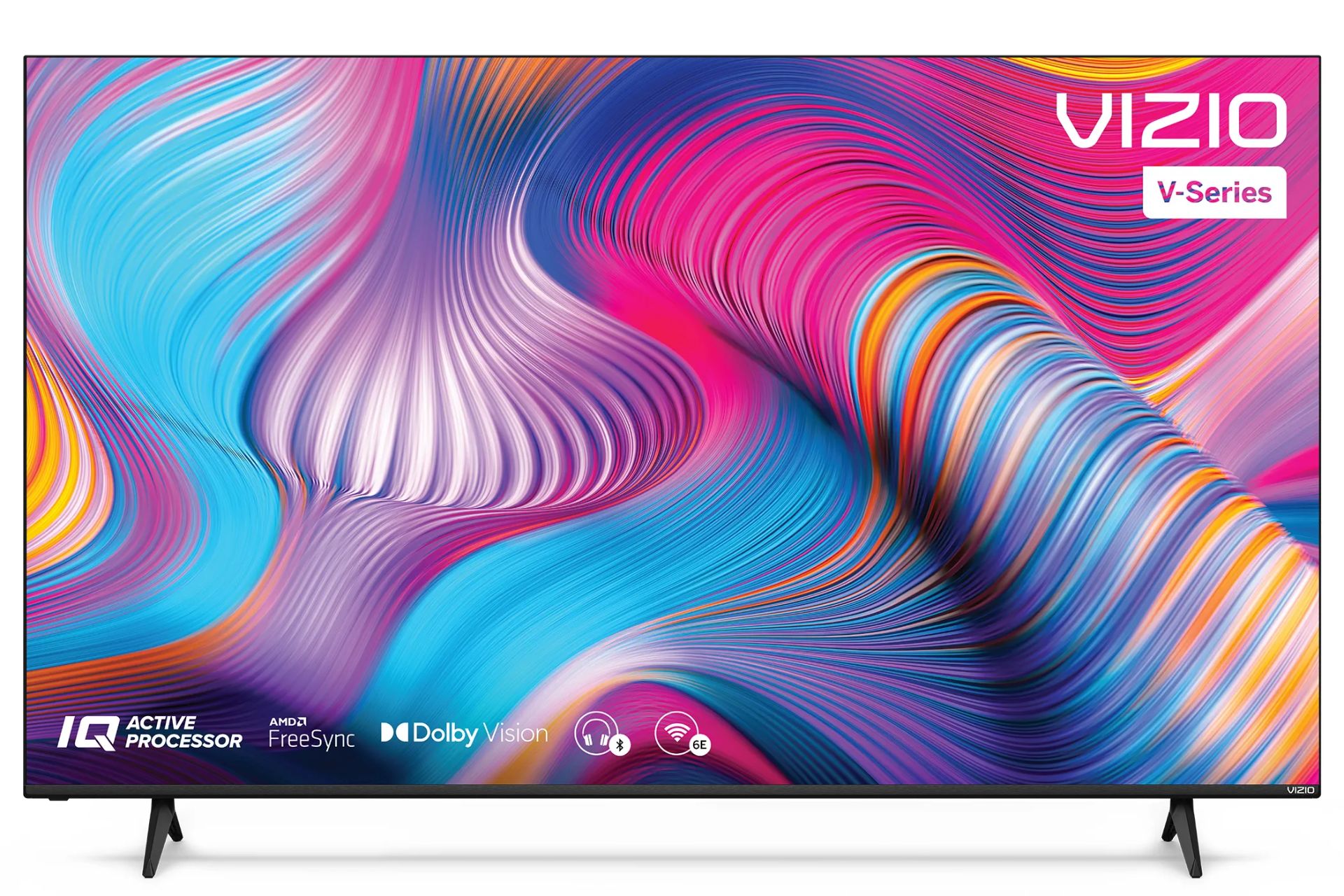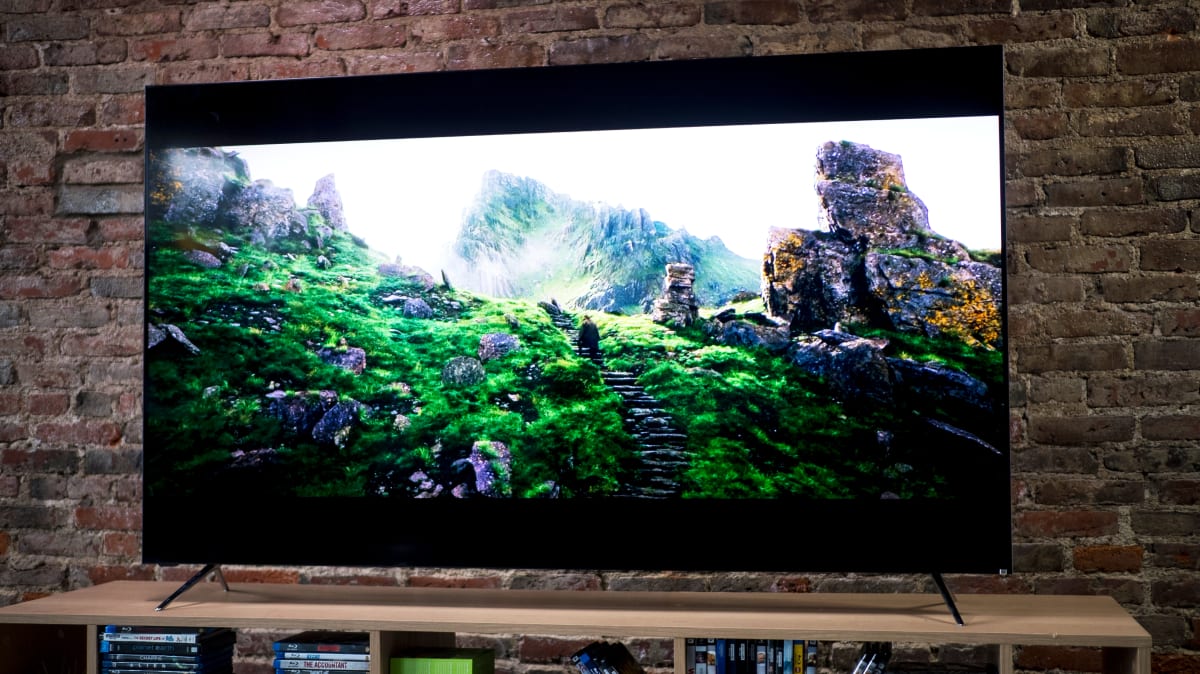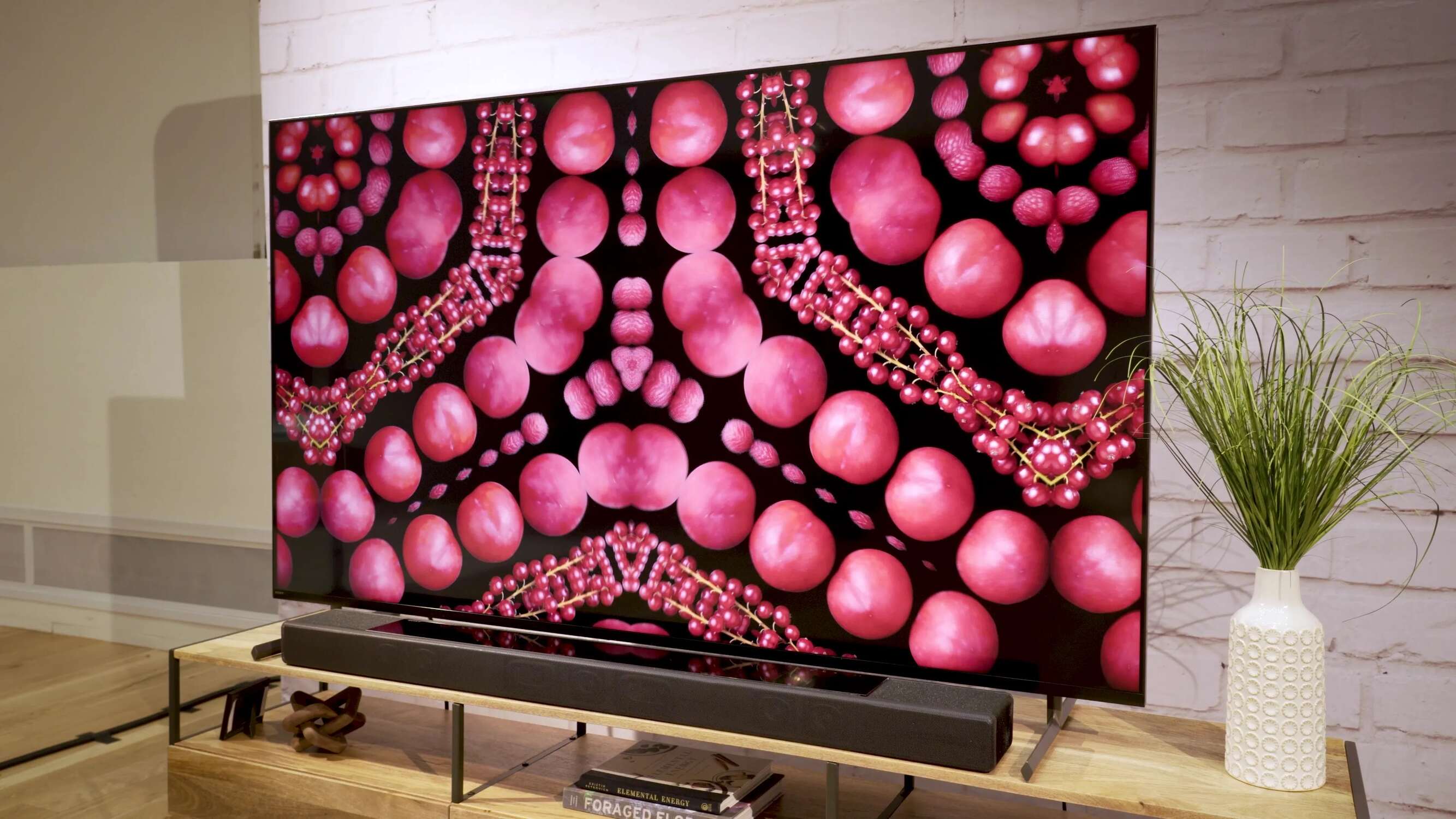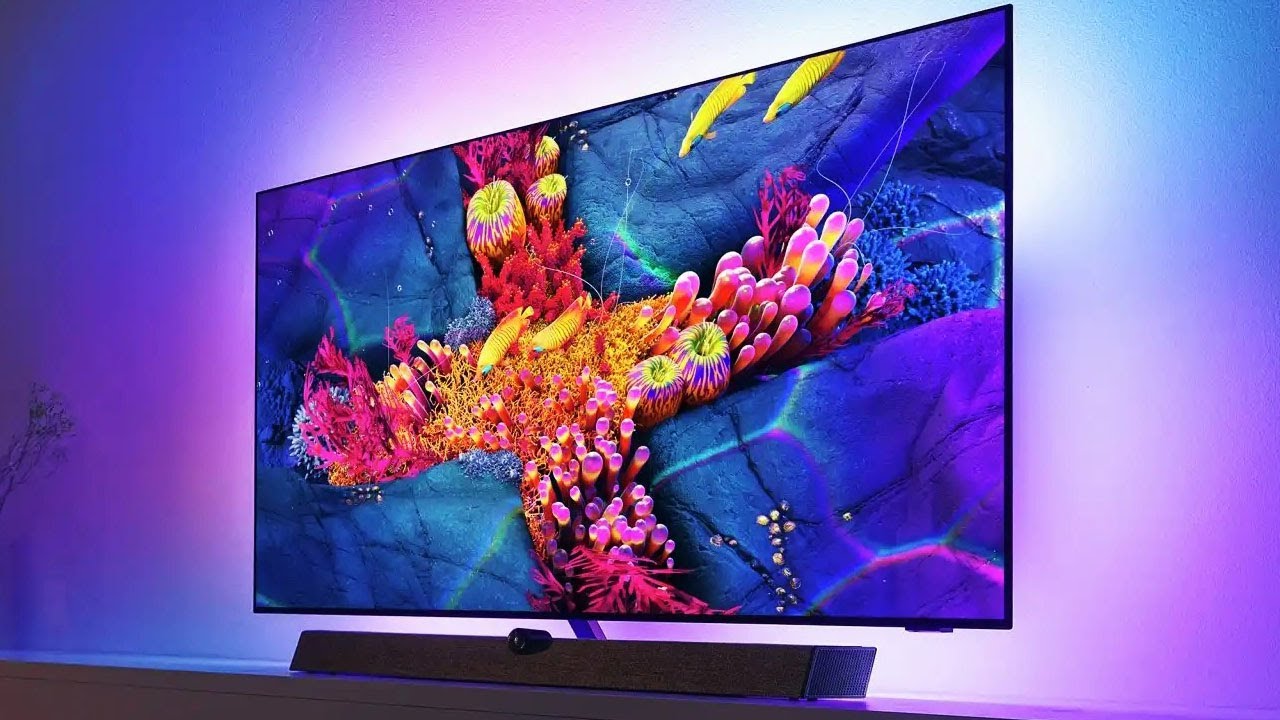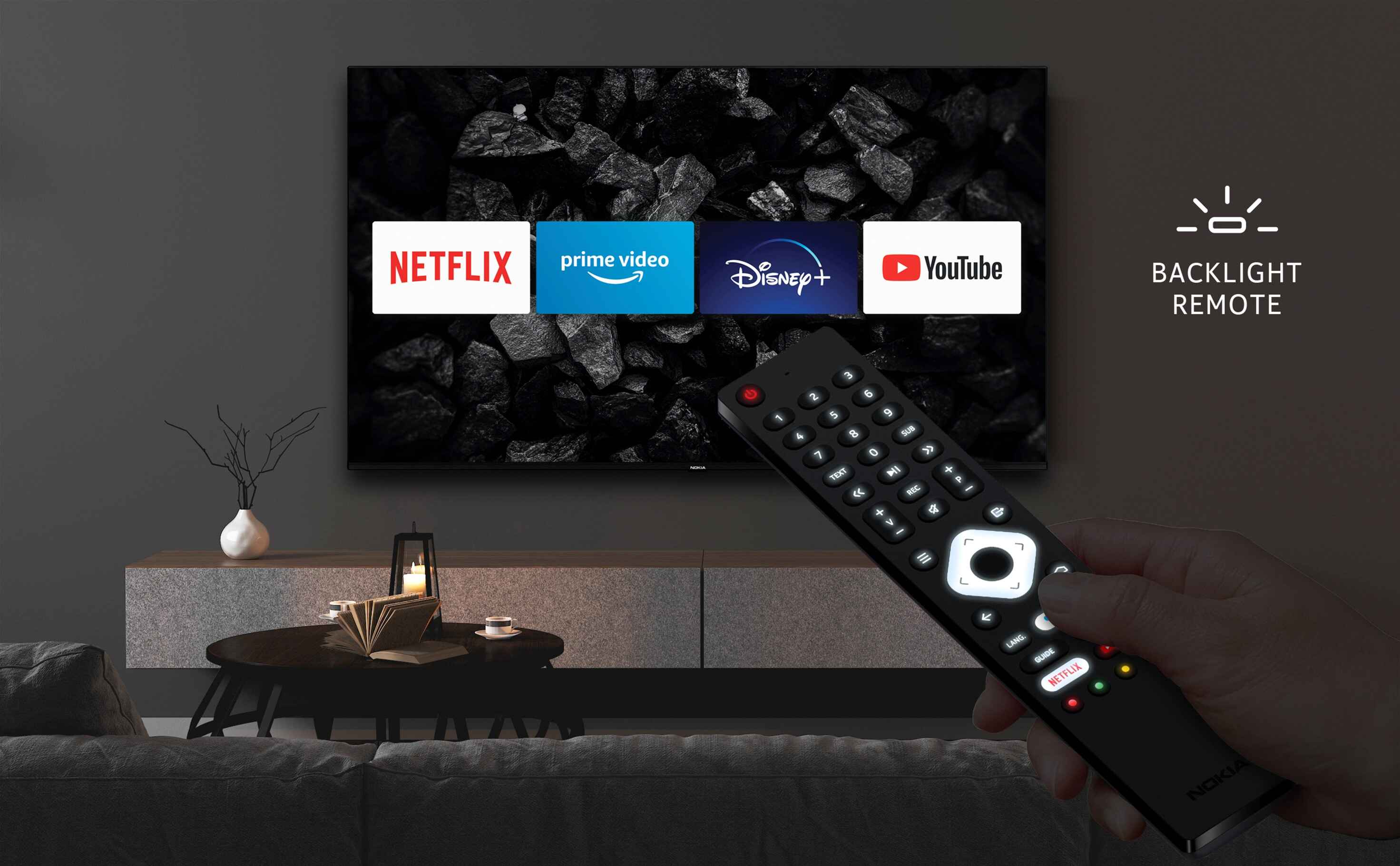Introduction
Smart TVs have become an integral part of our modern lives, providing entertainment, connectivity, and convenience all in one device. Whether you are streaming your favorite shows, browsing the internet, or playing games, the lifespan of your smart TV is an important consideration. Understanding how long a smart TV should last and the factors that impact its longevity can help you make informed decisions about purchasing and maintaining your device.
It is no secret that technology evolves rapidly, and this can greatly impact the lifespan of a smart TV. With new features, software updates, and advancements in connectivity, consumers may wonder if their current smart TV will still be relevant in a few years. Additionally, the quality of components used in the manufacturing process, user habits, and maintenance routines also play crucial roles in determining the longevity of a smart TV.
This article will delve into the various factors that impact the lifespan of a smart TV, such as technology advances, quality of components, and usage and maintenance practices. We will also explore the average lifespan of different TV brands and highlight signs that indicate it may be time to replace your smart TV. Finally, we will share some tips on how you can extend the lifespan of your smart TV.
It is important to note that the lifespan of a smart TV can vary depending on the brand, model, and usage patterns. While some TVs may last for several years without any issues, others may experience hardware or software problems sooner. By understanding the factors that influence the lifespan of your smart TV, you can make informed decisions about its care and know when it might be time to consider an upgrade.
Factors that Impact the Lifespan of a Smart TV
Several key factors play a significant role in determining the lifespan of a smart TV. Understanding these factors can help you make informed decisions about purchasing, using, and maintaining your device.
1. Technology Advances: One of the main factors impacting the lifespan of a smart TV is technology advances. As new technologies emerge and become more prevalent, older TV models may become outdated and eventually unsupported. Features such as streaming capabilities, app compatibility, and software updates can all contribute to the overall lifespan of the TV. It is essential to consider future-proofing when purchasing a smart TV to ensure that you can enjoy the latest features and updates for a reasonable period.
2. Quality of Components: The quality of components used in the manufacturing of a smart TV can have a significant impact on its lifespan. Higher-quality components are generally more durable and less prone to failures. When purchasing a smart TV, consider brands known for their reliability and quality craftsmanship, as this can directly affect how long the TV will last.
3. Usage and Maintenance: How you use and maintain your smart TV can also influence its lifespan. Excessive or improper usage, such as leaving the TV on for extended periods, playing video games for hours on end, or exposing it to extreme temperatures or humidity, can put additional strain on the device and shorten its lifespan. Regularly cleaning the screen and ensuring proper ventilation can also help prevent overheating and extend the life of the TV.
4. Power Surge Protection: Power surges caused by lightning strikes or electrical fluctuations can damage the sensitive internal components of a smart TV. Investing in surge protectors or uninterruptible power supply (UPS) systems can help safeguard your TV against power surges, ensuring its longevity.
5. Software Updates: Regular software updates provided by the TV manufacturer can improve the performance, security, and compatibility of your smart TV. Staying up to date with these updates can extend the lifespan of your device and ensure a seamless user experience. However, it is worth noting that at some point, a TV model may no longer receive updates, rendering it outdated.
6. User Handling: How you handle your smart TV can also impact its lifespan. Rough handling, moving the TV frequently, or applying excessive pressure to the screen can cause internal components to become loose or damaged. It is important to handle the TV with care and follow the manufacturer’s instructions for installation and maintenance.
Considering these factors and taking proactive steps to maintain and care for your smart TV can help extend its lifespan and ensure that you get the most out of your investment.
Technology Advances
The rapid pace of technological advancements has a profound impact on the lifespan of smart TVs. As new technologies emerge and become more prevalent, older TV models may quickly become outdated and unsupported. This technological progress can influence the overall lifespan and usability of a smart TV in several ways.
One of the main aspects affected by technology advances is the availability of new features. Smart TVs are constantly evolving to offer innovative functionalities and enhanced user experiences. These features can range from voice control and gesture recognition to built-in streaming services and smart home integration. As technology advances, older models may not be equipped with these cutting-edge features, thus limiting their usefulness and lifespan.
Additionally, the compatibility with various apps and streaming services can be impacted by technological advancements. As streaming platforms update their software and services, older smart TVs may not be able to keep up due to hardware limitations. This can result in a diminished user experience or even render certain apps unusable. Over time, this lack of compatibility may reduce the lifespan of the TV as users find it increasingly inconvenient or frustrating to use.
Moreover, software updates play a crucial role in the lifespan of smart TVs. Manufacturers regularly release updates to improve performance, add new features, and enhance security. However, as technology advances, older TV models may eventually reach a point where they are no longer eligible for software updates. Without these updates, the TV’s software becomes stagnant, potentially leading to compatibility issues with newer apps and services. As a result, the lifespan of these outdated models may be considerably shortened.
Lastly, advancements in connectivity standards can also affect the lifespan of smart TVs. For example, the transition from HDMI 1.3 to HDMI 2.0 brought with it support for 4K resolution and higher refresh rates. Smart TVs that lack the hardware capabilities to handle these higher resolutions and refresh rates may struggle to provide an optimal viewing experience. Over time, as 4K content becomes more prevalent, these older TVs may become less relevant and eventually deemed obsolete.
As consumers, it’s important to consider these technology advances when purchasing a smart TV. While it’s impossible to predict the future, opting for a model that offers the latest features and has the ability to receive software updates can help ensure a longer and more satisfying lifespan for your smart TV.
Quality of Components
When it comes to the lifespan of a smart TV, the quality of its components is a critical factor to consider. Higher-quality components tend to be more durable and reliable, leading to a longer lifespan for the TV. Conversely, cheaper or lower-quality components can result in a shorter life expectancy and potential performance issues.
One aspect of a smart TV that greatly impacts its longevity is the display panel. High-quality display panels, such as those made with advanced LCD or OLED technology, are more resilient and less prone to defects and pixel burn-in. These panels also provide superior image quality and better color accuracy. On the other hand, budget or low-quality display panels may exhibit uneven backlighting, color shifts, or even premature pixel failure, significantly impacting the TV’s lifespan.
In addition to the display panel, other critical components that affect the durability of a smart TV include the processor, memory, and storage. A powerful and efficient processor enables smoother multitasking, faster response times, and better overall performance. Adequate memory ensures smooth app operation and seamless navigation. Sufficient storage capacity allows for storing apps, games, and multimedia content. Investing in a smart TV with higher-quality components in these areas ensures a better user experience and a more extended lifespan.
Another component that can impact the lifespan of a smart TV is the power supply unit (PSU). A reliable and efficient PSU can handle voltage fluctuations and power surges, protecting the internal circuitry of the TV. On the other hand, a cheap or poorly designed PSU may fail to provide stable power, leading to overheating, component damage, and ultimately a shortened lifespan for the TV.
The build quality of the TV itself also plays a role in determining its longevity. TVs with sturdy frames and durable materials are less susceptible to damage caused by accidental bumps or falls. Additionally, proper ventilation design is essential to dissipate heat generated by the TV’s internal components. TVs with inadequate cooling can experience overheating, which can negatively impact performance and potentially lead to premature component failure.
Lastly, the brand reputation and manufacturer’s commitment to quality also factor into the longevity of a smart TV. Brands known for their durability and reliability tend to use higher-quality components and employ rigorous quality control measures during the manufacturing process. These reputable brands often offer longer warranties and provide better customer support, further ensuring the longevity and satisfaction of their products.
When considering a smart TV purchase, it is important to research the brand’s reputation, read reviews, and look for models with high-quality components. Investing in a TV with superior build quality and reliable components can significantly extend the lifespan of your smart TV, providing you with long-term enjoyment and value.
Usage and Maintenance
The way you use and maintain your smart TV can have a substantial impact on its lifespan. Understanding proper usage techniques and implementing regular maintenance practices can help ensure that your TV remains in good working condition for an extended period of time.
One crucial aspect of TV usage is managing its operating hours. Leaving your smart TV on for an extended period, especially when not in use, can put unnecessary strain on the components and potentially lead to overheating. It is recommended to turn off the TV when not in use or utilize power-saving features, such as sleep or standby mode, to conserve energy and reduce wear on the TV’s internal parts.
Another consideration is the intensity and duration of usage. Smart TVs are designed for a variety of activities, including streaming, gaming, and browsing. However, excessive and prolonged usage can lead to increased wear and tear on the TV’s components. Keep in mind that intense gaming sessions or continuously running demanding apps may put more strain on the TV than typical viewing habits. It is important to strike a balance and avoid prolonged usage that can potentially shorten the TV’s lifespan.
Proper maintenance is also essential for extending the longevity of your smart TV. Keeping the TV screen clean is crucial to ensure optimal picture quality and prevent the accumulation of dust or smudges. Gently wiping the screen with a microfiber cloth and avoiding harsh cleaning solutions can help maintain its clarity and prevent damage. Additionally, regularly cleaning the vents and ensuring proper ventilation around the TV can help prevent overheating and prolong its lifespan.
Protection against power surges is another aspect to consider for TV maintenance. Power surges caused by lightning strikes or electrical fluctuations can damage the sensitive internal components of a smart TV. Investing in surge protectors or uninterruptible power supply (UPS) systems can help safeguard your TV against these surges, ensuring its longevity.
Lastly, keeping the TV’s firmware and software up to date is crucial for optimal performance and longevity. Manufacturers release regular updates that address security vulnerabilities, improve performance, and add new features to the TV. Staying up to date with these updates helps ensure a smooth user experience and extends the lifespan of your smart TV.
By following proper usage practices and implementing regular maintenance routines, you can maximize the lifespan of your smart TV. This includes managing operating hours, avoiding excessive and intense usage, keeping the TV clean, protecting against power surges, and staying up to date with firmware updates. By taking these steps, you can enjoy your smart TV for many years to come.
Average Lifespan of Different TV Brands
When it comes to the lifespan of smart TVs, various factors contribute to their longevity, including the manufacturing quality, components used, and overall build. While it is challenging to provide an exact lifespan for each TV brand, we can look at general trends and customer experiences to get an idea of the average lifespan of different TV brands.
One thing to note is that the average lifespan can vary significantly depending on usage patterns, maintenance, and overall handling. However, certain brands have earned a reputation for producing TVs that tend to last longer than others.
In general, established and reputable brands known for their quality and reliability, such as Sony, Samsung, and LG, often offer TVs that have a longer average lifespan. These brands have a track record of using high-quality components, implementing stringent quality control measures, and providing excellent customer support. TVs from these brands are more likely to withstand the test of time and provide many years of reliable service.
On the other hand, some budget or lesser-known brands may offer TVs that have a shorter average lifespan. These brands may cut corners in terms of component quality, manufacturing standards, or customer support. While these TVs may be more affordable initially, they may require more frequent repairs or replacement, which can cost more in the long run.
It is important to note that the average lifespan can still vary within a brand’s product lineup. Higher-end models often have better quality components and are expected to last longer compared to entry-level or budget models. Additionally, technological advancements and updates can render older models obsolete sooner, as software support and compatibility may no longer be available.
Ultimately, when considering the average lifespan of different TV brands, it is crucial to research specific models and read customer reviews. This will provide a better understanding of the real-world experiences of users and their satisfaction with a particular TV brand.
While it is challenging to provide a precise average lifespan for different TV brands, investing in reputable brands known for their quality and reliability is generally a good decision. Higher-quality components, better build quality, and excellent customer support can contribute to a longer average lifespan for the TV, ensuring that you get the most out of your investment.
Signs that Your Smart TV Needs Replacement
Smart TVs, like any electronic device, have a limited lifespan. Over time, they may begin to exhibit signs of wear and tear, or become outdated due to advancements in technology. Here are some common signs that indicate it may be time to consider replacing your smart TV:
1. Diminished Performance: If you notice a significant decrease in the performance of your smart TV, such as slower response times, lagging during video playback, or frequent crashes, it may be a sign that the internal components are struggling to keep up with modern demands. This can be especially apparent when trying to run newer apps or streaming high-resolution content.
2. Outdated Software and App Compatibility: As technology advances, the software running on older smart TVs may become outdated and no longer receive updates. This can result in compatibility issues with newer apps and services, limiting your access to the latest features and content. If your TV is no longer receiving software updates or struggles to run the latest apps, it may be time for an upgrade.
3. Physical Damage: Physical damage to the TV, such as cracked screens or severe dents, can significantly impact the viewing experience and may render the TV unusable. While minor scratches or cosmetic flaws may not affect functionality, extensive damage can be a sign that it’s time to replace your smart TV.
4. Image Quality Issues: If you begin to notice persistent image quality issues, such as distorted colors, blurry or pixelated images, or backlight flickering, it could indicate a problem with the display panel or internal components. While some image issues can be resolved through calibration or settings adjustments, persistent problems may warrant a replacement.
5. Lack of Supported Features: Smart TVs evolve rapidly, and new features and functionalities are regularly introduced. If your current TV lacks essential features that are becoming standard, such as HDR support, advanced connectivity options, or voice control, upgrading to a newer model can enhance your viewing experience.
6. Repair Costs: If your TV experiences a major component failure or requires frequent repairs, it may be more cost-effective to replace it rather than continuing to invest in repairs. Keep in mind that repair costs can quickly add up, and in some cases, the cost of repairing an older TV may not be justified compared to investing in a new and improved model.
7. Outdated Connectivity Options: As technology advances, new connectivity standards may be introduced, such as HDMI 2.1 or Wi-Fi 6. If your smart TV lacks these updated connectivity options, it may limit your ability to fully utilize the latest devices and technologies. Upgrading to a TV with modern connectivity options ensures future compatibility and convenience.
It is important to evaluate these signs in conjunction with your specific needs and preferences. While some signs may indicate a clear need for replacement, others may be subjective or depend on personal preferences. Ultimately, deciding when to replace your smart TV is a judgment call based on the overall performance, functionality, and satisfaction you derive from your current TV.
Tips for Extending the Lifespan of Your Smart TV
To ensure that your smart TV lasts as long as possible and continues to provide you with an enjoyable viewing experience, you can incorporate the following tips into your TV usage and maintenance routines:
1. Proper Ventilation: Ensure that your smart TV has proper airflow and ventilation. Avoid placing it in enclosed spaces or stacking other electronic devices on top of it. Good airflow helps prevent overheating and prolongs the lifespan of the internal components.
2. Regular Cleaning: Dust and debris can accumulate on the screen and vents, affecting the image quality and causing overheating. Gently wipe the screen with a microfiber cloth and use a soft brush or compressed air to clean the vents. Avoid using harsh chemicals or abrasive materials that may damage the screen or casing.
3. Avoid Extreme Temperatures: Prolonged exposure to extreme temperatures can damage the internal components of your smart TV. Protect it from direct sunlight, and avoid placing it near sources of heat or cold, such as heaters or air conditioning units.
4. Power Surge Protection: Invest in surge protectors or uninterruptible power supply (UPS) systems to protect your TV from sudden power surges caused by lightning or electrical fluctuations. Power surges can damage the delicate internal circuits and significantly shorten the lifespan of your smart TV.
5. Software and Firmware Updates: Regularly check for and install software and firmware updates provided by the manufacturer. These updates often include bug fixes, security patches, and performance improvements. Keeping your smart TV up to date ensures optimal performance and compatibility with the latest apps and services.
6. Use Sleep or Standby Mode: When not actively using your smart TV, utilize sleep or standby mode to conserve energy and reduce wear on the internal components. This helps extend the lifespan of your TV by minimizing unnecessary power consumption.
7. Adjust Picture Settings: Carefully calibrate the picture settings of your smart TV to avoid excessive brightness, contrast, or saturation levels. High levels of these settings can lead to quicker image degradation and potential burn-in. Adjusting the settings according to your viewing environment can help preserve the integrity of the screen and improve longevity.
8. Avoid Static Images: Leaving static images, such as channel logos or game HUDs, on the screen for extended periods can lead to image retention or burn-in. Try to vary the content you watch to prevent the same static elements from being displayed continuously, reducing the risk of permanent damage to the screen.
9. Handle with Care: When moving or repositioning your smart TV, be gentle and avoid applying excessive pressure on the screen. Follow the manufacturer’s guidelines for safe handling to reduce the risk of physical damage to the device.
10. Consider Power-Cycling: Occasionally power-cycling your TV by unplugging it from the power source for a few minutes can help refresh its system and resolve minor performance issues. However, avoid doing this frequently, as it can put unnecessary strain on the TV’s components.
By implementing these tips, you can extend the lifespan of your smart TV and maximize your investment. Proper ventilation, regular cleaning, power surge protection, software updates, and responsible handling can all contribute to a longer-lasting and more enjoyable viewing experience.
Conclusion
Understanding the factors that impact the lifespan of a smart TV and implementing proper usage and maintenance practices is crucial for maximizing the longevity of your device. Technological advances, quality of components, usage patterns, and maintenance routines all play significant roles in determining how long your smart TV will last.
As technology evolves, it is important to consider future-proofing when purchasing a smart TV. Investing in a reputable brand known for its quality and reliability can provide you with a longer-lasting TV that will remain relevant as new features and technologies emerge.
The quality of components used in the manufacturing process is another critical factor. Higher-quality components are generally more durable, reliable, and less prone to failures compared to lower-grade alternatives.
Proper usage and maintenance practices can also contribute to extending the lifespan of your smart TV. This includes managing operating hours, avoiding excessive usage, implementing regular cleaning routines, protecting against power surges, and staying up to date with software updates.
Recognizing the signs that your smart TV needs replacement is essential. Diminished performance, outdated software and app compatibility, physical damage, image quality issues, lack of supported features, high repair costs, and outdated connectivity options are all indications that it may be time to consider an upgrade.
By following these tips and being mindful of these factors, you can increase the lifespan of your smart TV and ensure that it continues to meet your entertainment needs for years to come.









